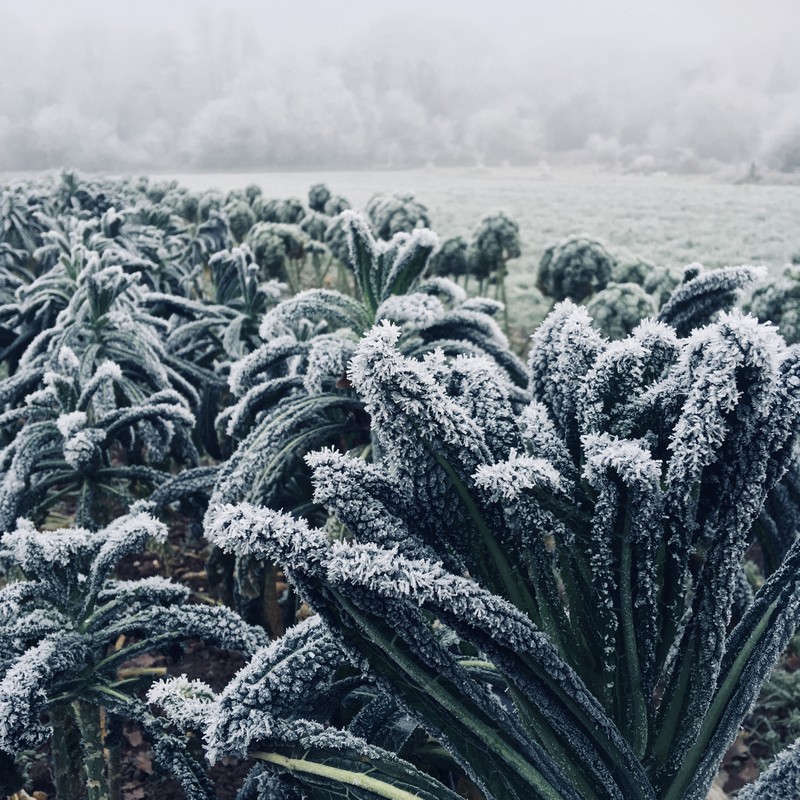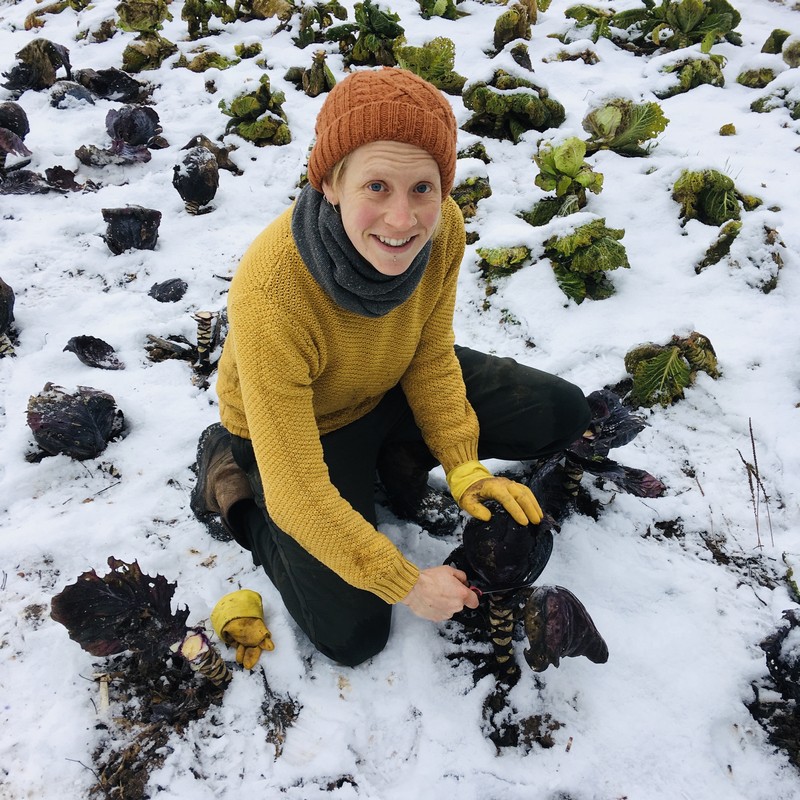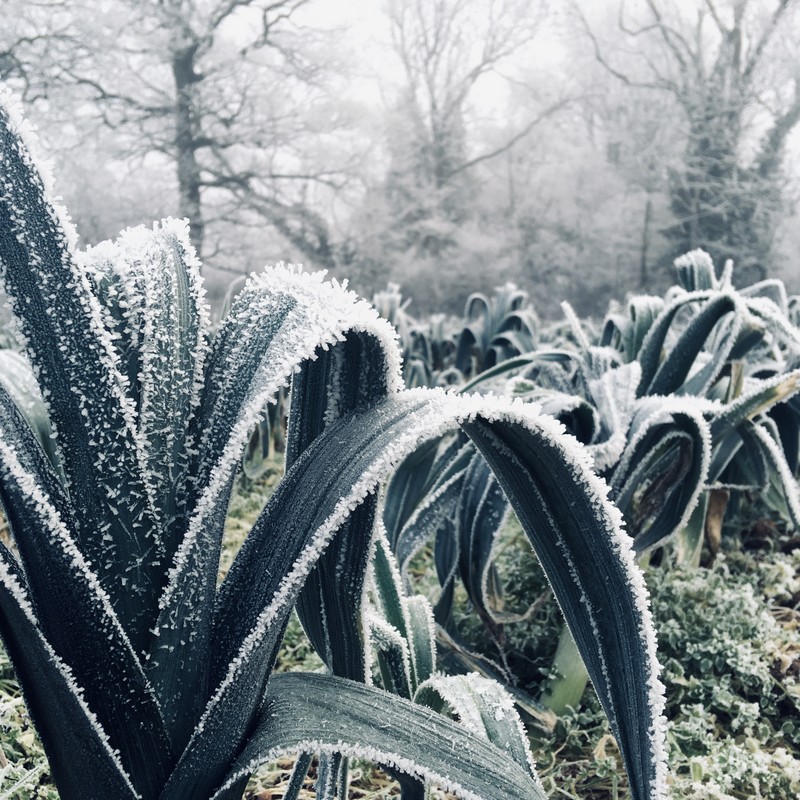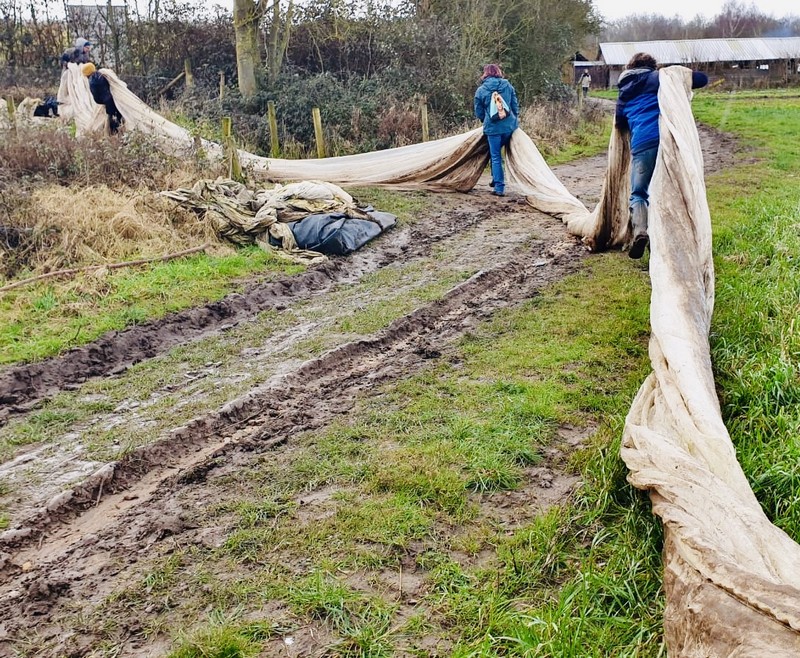Words from Work Mornings
Whilst there is much uncertainty in the world, the popularity of CSAs has shown that local food production is an essential, safe and reliable service. We’ve seen a great turnout at our work mornings in the last year, and perhaps due to lockdown are again seeing a boom in people coming to help out. As volunteering work is still allowed, we find jobs where we can space out or work in household bubbles. It’s a wonderful opportunity to get outside and be together in a safe way, working towards a common goal at a time when there is so much separation.
Here’s what our workshares and volunteers have to say:
‘I love the welcome and camaraderie, it’s amazing how much we get done when we work together, this is a unique place’ – Clare (volunteer workshare)
‘It’s the highlight of our week’ – Christine and Dave (veg members and volunteers)
“A workshare at Canalside ticks so many boxes, providing exercise, fresh air, vitamin D and purposeful companionship in a relatively safe, outdoor environment.’ – Zoe (volunteer workshare)
If you’d like to read more from Zoe you can read her blog about joining Canalside here.
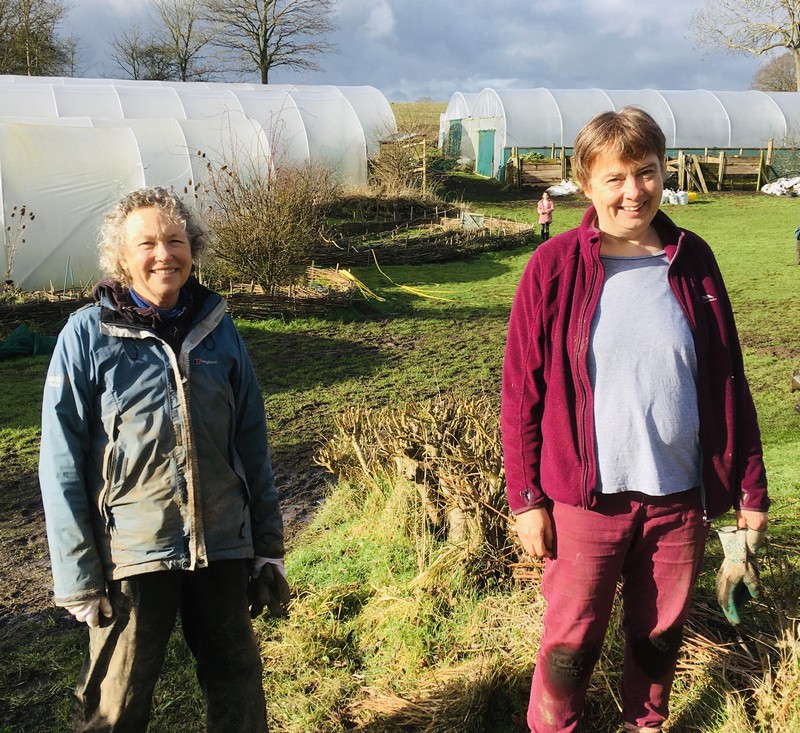
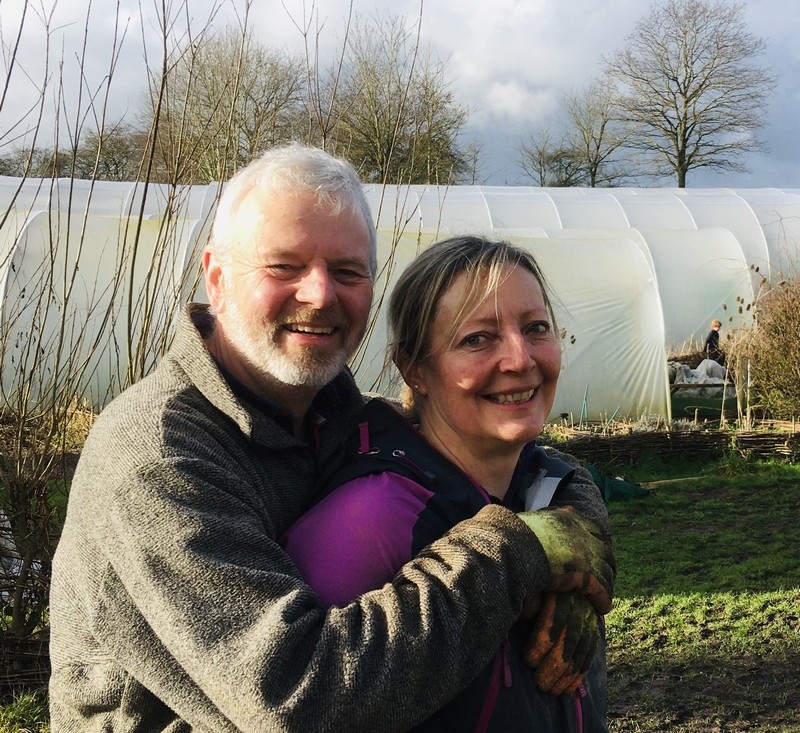
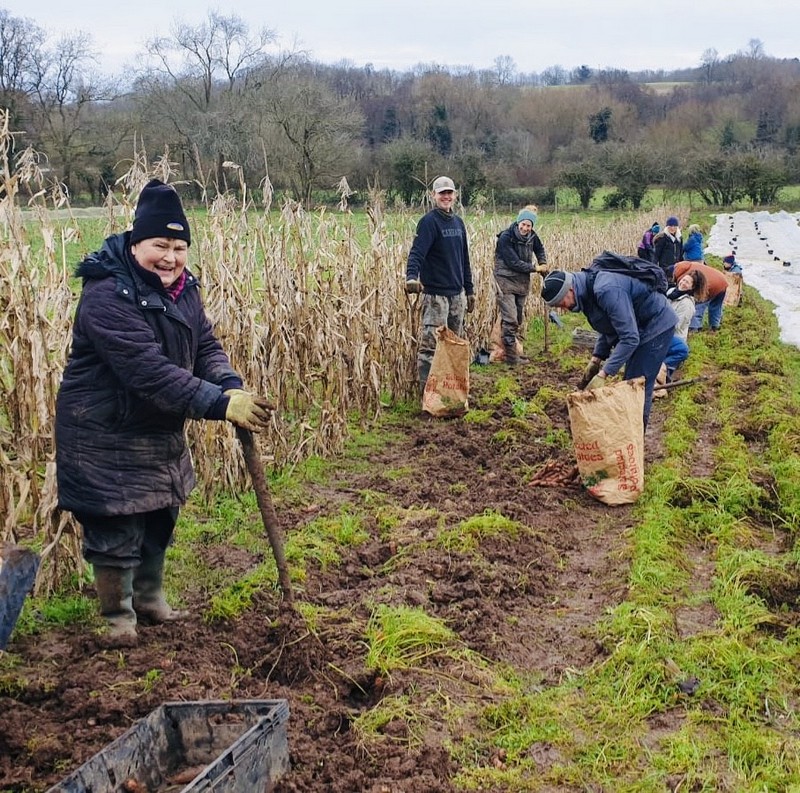
2021: January news – Would you rather…?
Well the farm turned into Narnia earlier this week and reminded us how lucky we are to be in this space, bringing a moment of beauty and peace that only a snow scape can – see photos! Alas, it quickly returned back to the familiar mud bath. Harvesting crops in hard frost and snow is always an interesting experience and the team seem to spend a lot of time at the moment playing ‘would you rather’: ice and snow, pouring rain or searing heat. Outcome TBA.
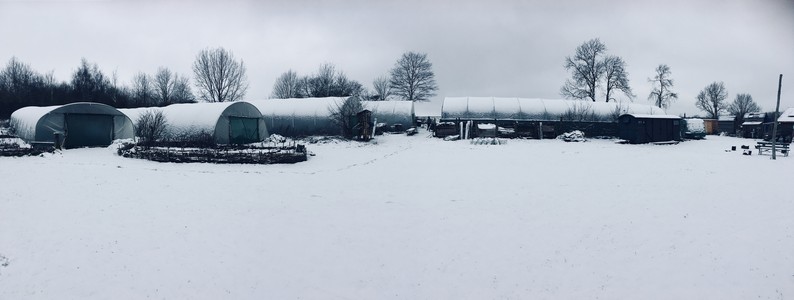
British weather issues aside – we’re turning our attention to spring planting, taking away our old ground covers ready to muck spread for the new crops.
A big ‘thank you’ to our workshares and volunteers turning out on Wednesdays and Saturdays, helping get lots of big jobs done and site maintenance – you’re very much appreciated.
2020: December news – Moving forward into 2021
As 2020 comes to a close we arrive in a new phase at Canalside.
There is a lot to celebrate and be proud of here. The COVID era of 2020 has demonstrated the success and value of CSAs and local food production. A huge thank you to everyone involved in our success – our members, volunteers, workshares, steering committee and staff all play an important role. The bee club, flower enterprise and Willows Project also continue to blossom and be an integral part of the farm.
Whilst we continue to advertise for a new main grower, the land team are looking ahead and feeling good about the future – assistant growers Lena and Stephen will be joined by seasonal labourer and long-standing volunteer workshare, Eleanor Brown, and have been working on the growing plan for 2021. Also working alongside the team will be Gareth and Becca from Five Acre, our sister CSA in Coventry, providing weekly support.
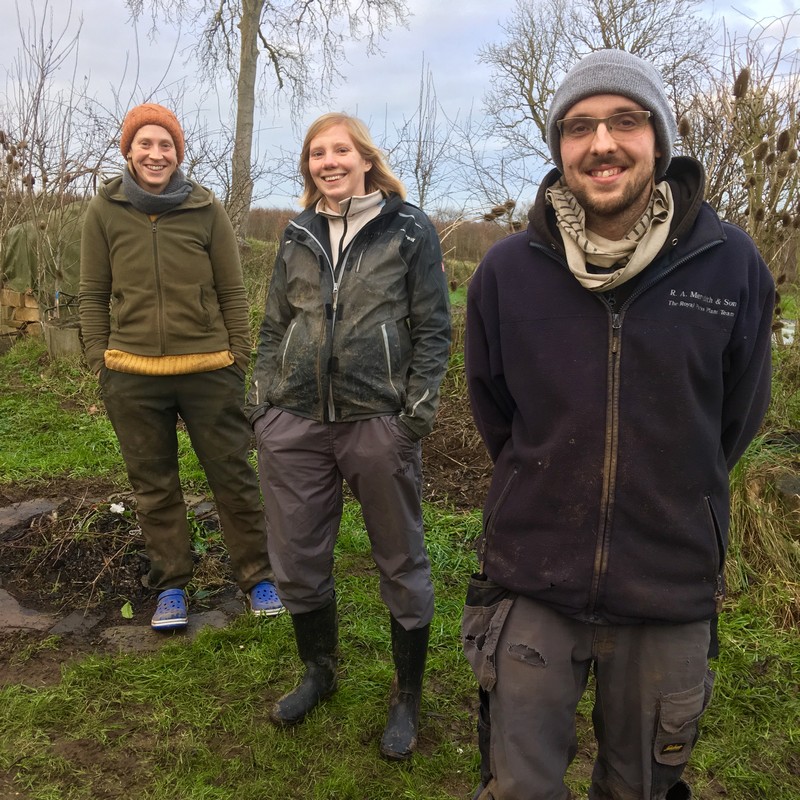
Moving forward into 2021 we are excited about the potential of the farm and have lots of plans to develop the site; buying new land, planting an orchard, creating more social spaces facilitating more connection for members into the farm both socially and through volunteering. Whilst still adhering to COVID rules we are wanting to welcome you to feel part of the place, celebrating the community aspect of CSAs as much as our focus on the agriculture.
The land team – Lena, Stephen and Eleanor
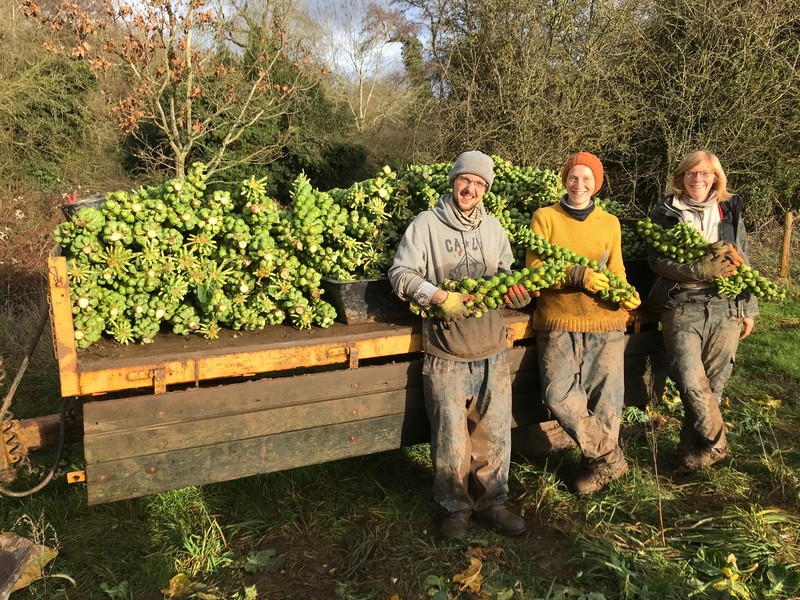
Help us buy more land for our community!
Please donate to Canalside Community Food
Canalside Community Food has always relied on the rent of neighbouring Leasowe Farm’s land for our fruit.
Canalside now has the opportunity to purchase an adjacent field of 2.25 acres (see map below) so that we can plant an orchard on land that we own, and safeguard the availability of our own fresh fruit for the future.
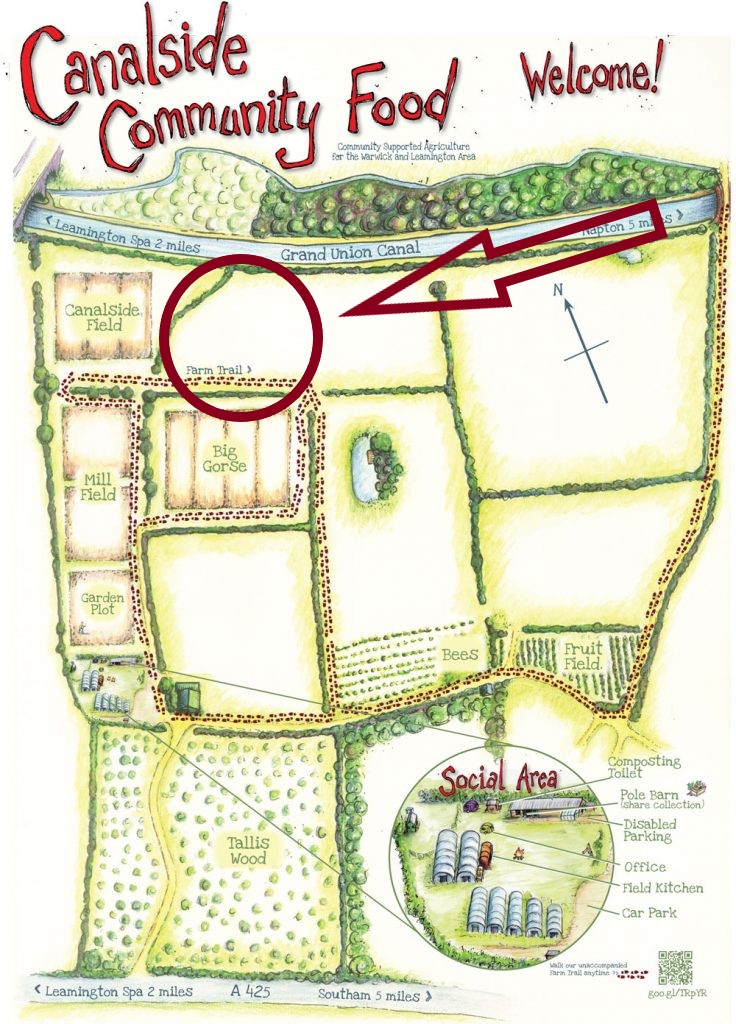
At our most recent AGM, we agreed to put £10,000 of our reserve funds towards this purchase. That still leaves us short by between £15,000-£20,000, so we agreed to appeal for donations from the wonderful community that we serve.
We would therefore appeal to anyone who shares our vision and passion for Canalside Community Food to donate what they can for this investment in the future of Canalside and the diversity we can offer.
Not only will this purchase enable us to plant and maintain an orchard on our own land in perpetuity, but it will also increase the value of the current land, and provide a wonderful new area for the entire community to enjoy.
We need to finalise this wonderful opportunity by Spring 2021, and would be extremely grateful for any donation you can make before then.
For further information, please contact Gareth Davies.
To donate, please complete the donation form and we will be in touch with you about making your payment. And as a thank you for donating, you will get a beautiful poster of images from Canalside.
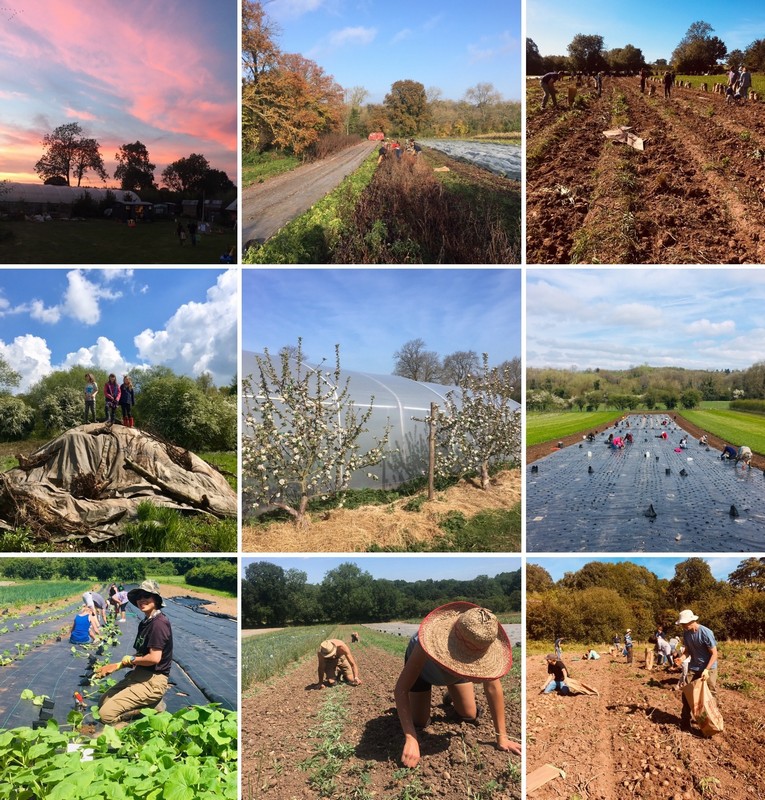
Still available: Job opportunity at Canalside – main grower
We continue to look for a new grower!
Canalside Community Food, a pioneering CSA based outside Leamington Spa, is looking for a new main grower. We are seeking an experienced grower to join our team producing organic vegetables and fruit throughout the year for our community of nearly 200 members.
The successful candidate will work in collaboration with the assistant growers, administration team and seasonal staff, as well as the steering committee and volunteers. The main grower will take a key role in organising and leading the day-to-day management of the farm which includes organising and leading volunteer work mornings, working from and adapting an established rotation and cropping plan, operating a tractor and various manual tools, and reporting to the steering committee.
We are looking for somebody to commit to this fantastic opportunity for at least three seasons. We currently have 7 acres of field scale vegetables, 7 large polytunnels for protected cropping and a 2 acre orchard of top and soft fruit. This position is full-time (37.5 hours per week March-October, 30 per week Nov-Feb) with basic salary of £20,229, statutory holiday allowance and a pension offered.
More details and full job description here
Applications by CV and covering letter to mail@canalsidecommunityfood.org.uk.
You are strongly encouraged to contact us as soon as possible to express interest in the role, and discuss the position and application timelines (including visit/interview); we are wanting to appoint at the earliest opportunity so that the new grower can start by the beginning of the new season.
2020: November news – Heart Beets
It was the final big seasonal workday of 2020, my final one as head grower here, and hopefully the last one we’ll ever have to do under lockdown, fingers crossed… and it was wonderful, with eager beet-pickers of all ages defying the wet weather forecast and ripping red roots from the earth from sunrise (well, it was 10am and there wasn’t any sun, but I’m pleading artistic licence). All in all we picked 990 kilos of which about a quarter is the golden variety. They are all tucked away clamped in sand at the back of the barn – huge thanks to the clamping team, the unsung heroes of the day. Beets store well in this way until June, so there’ll be lots to look forward to in 2021!
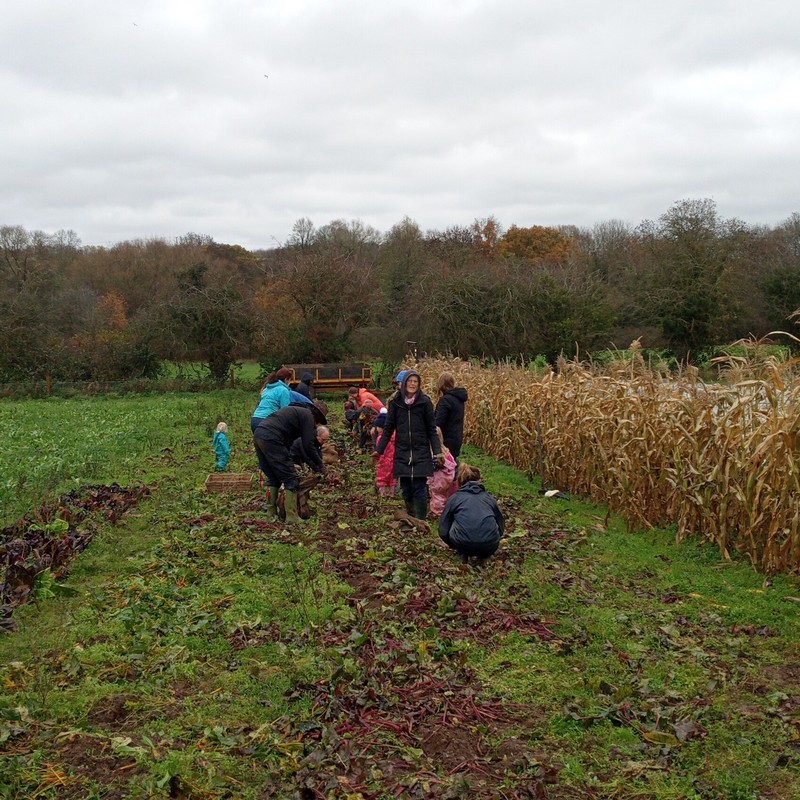
The beet harvest in progress 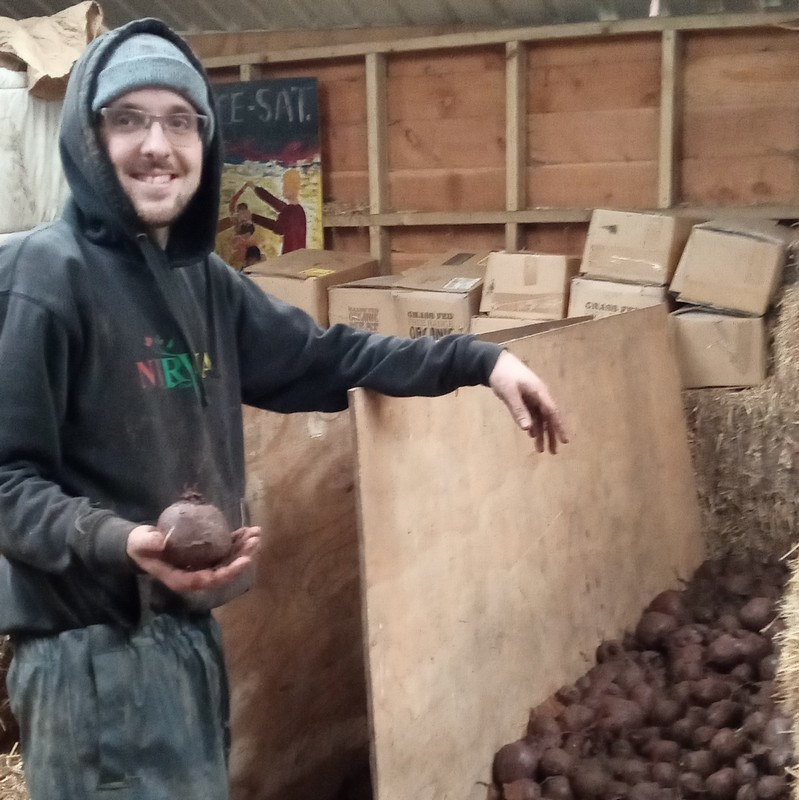
Beet clamping
Job opportunity at Canalside – main grower
Canalside Community Food, a pioneering CSA based outside Leamington Spa, is looking for a new main grower. We are seeking an experienced grower to join our team producing organic vegetables and fruit throughout the year for our community of nearly 200 members.
The successful candidate will work in collaboration with the assistant growers, administration team and seasonal staff, as well as the steering committee and volunteers. The main grower will take a key role in organising and leading the day-to-day management of the farm which includes organising and leading volunteer work mornings, working from and adapting an established rotation and cropping plan, operating a tractor and various manual tools, and reporting to the steering committee.
We are looking for somebody to commit to this fantastic opportunity for at least three seasons. We currently have 7 acres of field scale vegetables, 7 large polytunnels for protected cropping and a 2 acre orchard of top and soft fruit. This position is full-time (37.5 hours per week March-October, 30 per week Nov-Feb) with basic salary of £20,229, statutory holiday allowance and a pension offered.
More details and full job description here
Applications by CV and covering letter to mail@canalsidecommunityfood.org.uk: deadline – noon on Monday 16th November 2020.
Interviews on 28th November to start early January 2021 or asap thereafter.
2020 – October news: Rat Attack
Here at Canalside we live in harmony with all of nature’s fauna and flora. However, some animals are getting a bit too harmonious for my liking: someone, or something, has discovered our squashes (which are seasoning in tunnel 3 just now) and invited all its friends and family for a squash party! We suspect the rat, so have set up live traps which so far have failed to entice the offender. Luckily not too many fruits have been lost so far.
Dom van Marsh
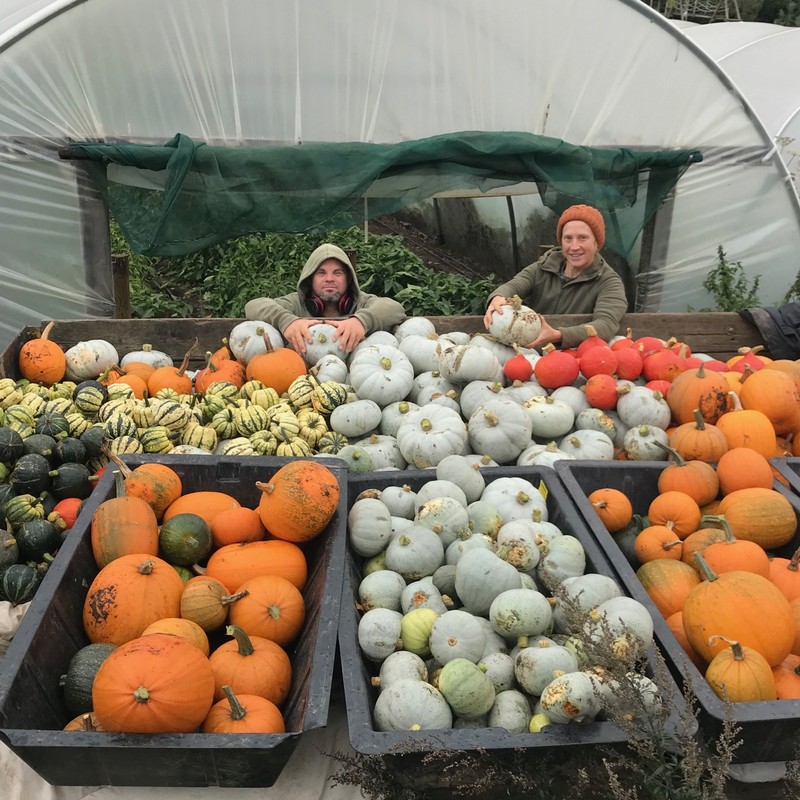
The squash haul being unloaded 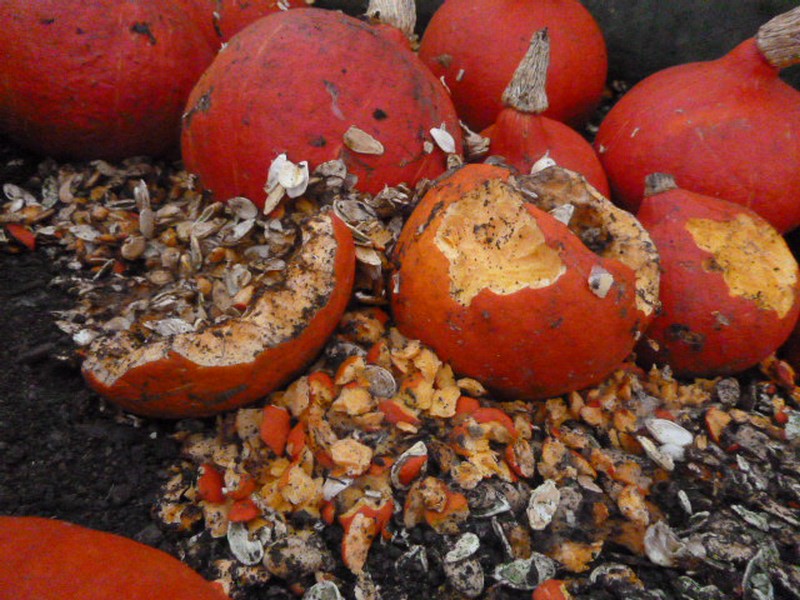
The post-party mess…!
2020 – September news: Skinned
‘To skin’ is one of those unusual verbs with two meanings that are the complete opposite of one another. The skin a rabbit is to remove the skin, but to skin a polytunnel is to put it on – as the land team (finally!) did to tunnel 1 on Monday. The main reason to replace the polythene cover is about opacity more than anything else – you can ‘clearly’ see this by comparing the transluscent new cover of tunnel 1 with its 13 year old, virtually opaque neighbour. This will give much better crop growth, particularly in winter. Canalside member Eleanor made a fantastic short video of the work, which you can view on vimeo.
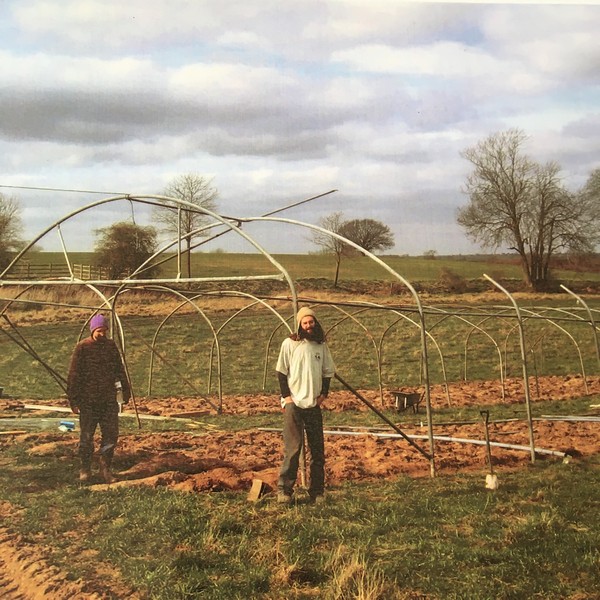
Tunnel 1 – ready for its first skinning
Winter 2006/07 – photo Tom Ingall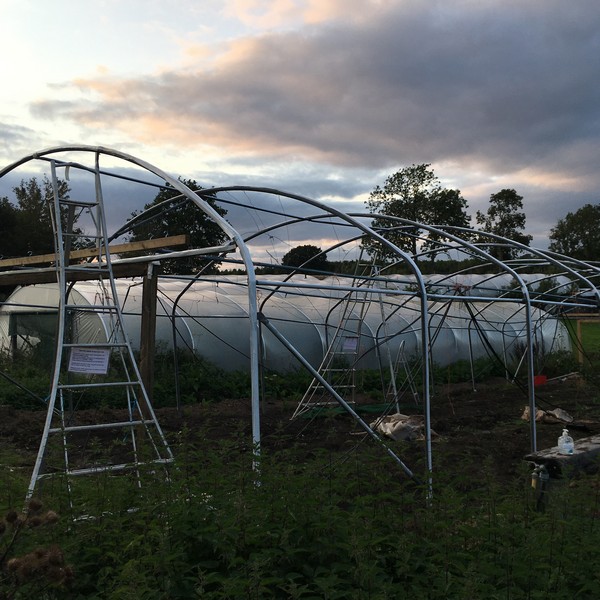
Second skinning preps complete 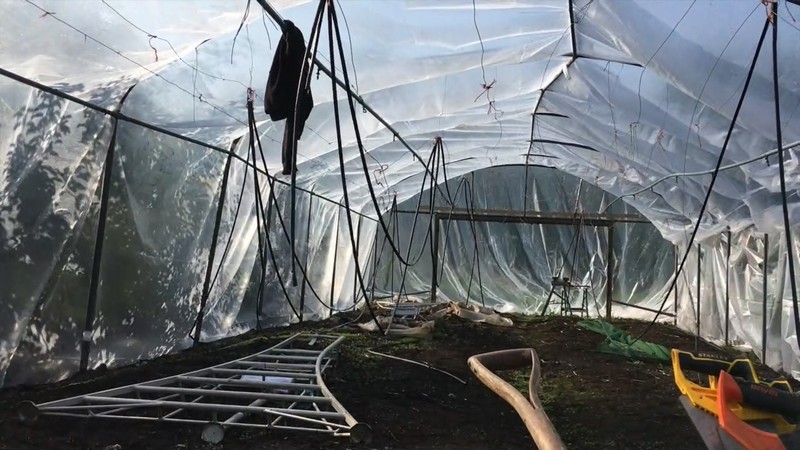
Watch the video of the skinning process
Credit to Eleanor Brown
2020 – August news: Roasting
Regular readers of Canalside news will know I love a weather stat, and this week has delivered a few – England has recorded temperatures upwards of 34 degrees for 6 successive days in a sequence that included the third hottest August day for 17 years.
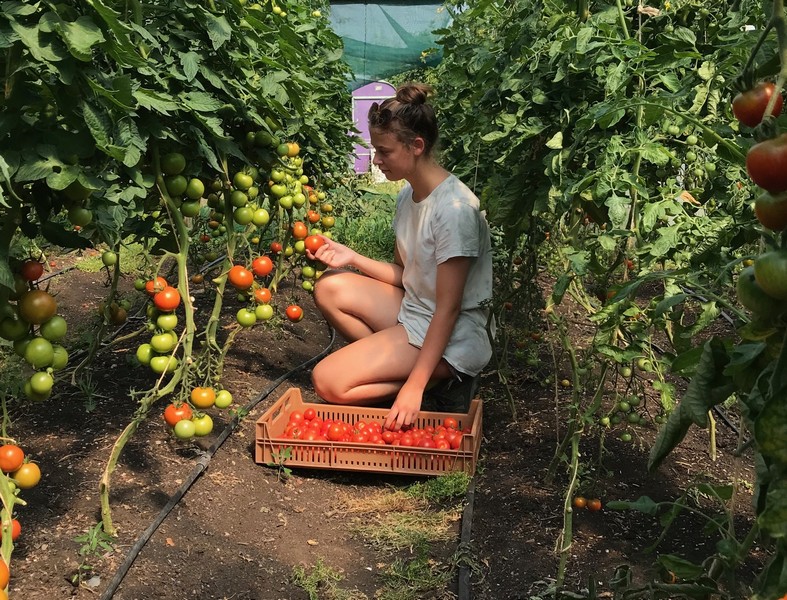
Heatwave harvesting
Photo: Magali Fowler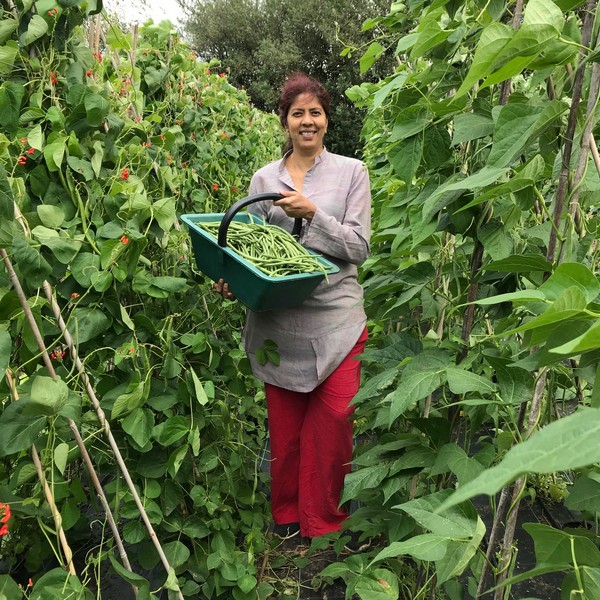
Bean bonanza
Photo: Magali Fowler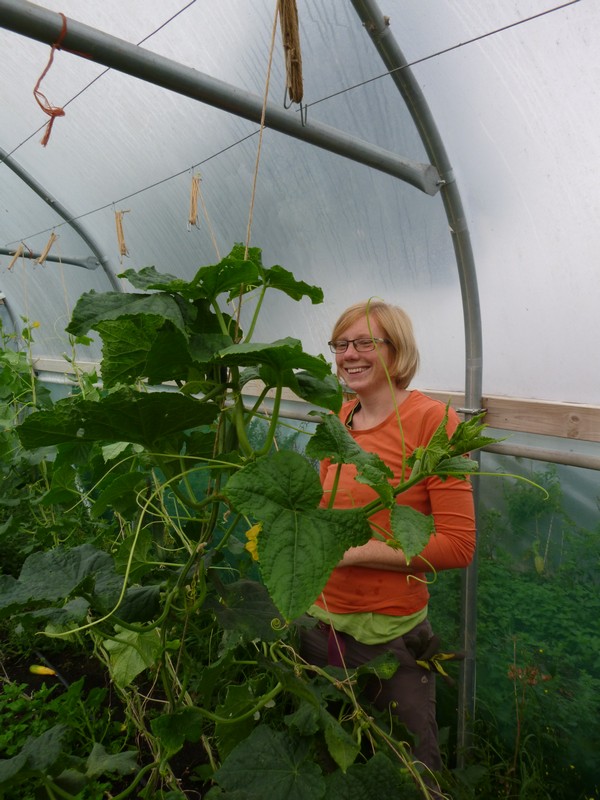
Cucumber TLC
At the farm it has been challenging to say the least for land workers, not to mention the plants – thankfully thunderstorms have brought much-needed rain to quench their thirst. The downpours have helped arguably the most important crop on the farm to germinate nicely: the grass-clover green manure leys that are the biological powerhouse behind our soil fertility. Green manure replenishes soil nutrients and regenerates soil health as well as providing habitat for insects, and it is always a huge relief to see it germinating well!
Dom van Marsh, head grower
